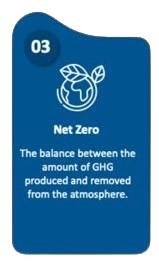Knowledge Hub
Net Zero
What is net zero?



Net Zero
Passive design optimization
What is Net Zero?
“Net zero” refers to the concept of achieving a balance between the amount of greenhouse gas emissions produced and the amount removed from the atmosphere. In the context of climate change, the term specifically relates to achieving a balance between the total emissions of greenhouse gases and the amount that is offset or removed.
The goal of a net-zero approach is to minimize the impact of human activities on the climate by ensuring that any emissions released are offset by an equivalent amount of emissions removed or reduced. This can be achieved through various means, including investing in renewable energy sources, implementing energy efficiency measures, and supporting projects that capture or remove greenhouse gases from the atmosphere, such as afforestation or carbon capture and storage.
The Paris Agreement, adopted in 2015, aims to limit global warming to well below 2 degrees Celsius above pre-industrial levels, with efforts to limit the increase to 1.5 degrees Celsius. Many countries, businesses, and organizations have set net-zero targets as part of their climate action plans to contribute to these global climate goals. Achieving net-zero emissions is considered crucial in the broader efforts to mitigate climate change and its associated impacts.

